|
The idea of making this gown began in early 2021, sparked by a lucky fabric find. I came across over 6.0 metres of 152cm wide (!!!) cotton on sale in a small local shop, the fabric woven in a reduced-scale sett pattern of the official Nova Scotia tartan (Nova Scotia being my current home Province). Buying the "real thing" at that time, i.e. the true Nova Scotia tartan in 100% wool, was not an option at the usual price of at least $50 per metre. Besides, I felt the cotton fabric was a better, more comfortable (and washable!) choice for upcoming summer wear, when we all hoped Covid might disappear and historical events re-appear. Alas, Covid had other ideas. But being ever the incurable optimist, I made the gown anyway, and the bright, cheery, positive colour of the cotton fabric made it all the more enjoyable to work with. Some photos of me wearing the gown on a blustery spring day in 2021 are included in my comical blog/video at the link below, but I've also added pictures here for reference. This gown was cut in the "long-back" English style, and worn over my "go-to" iridescent yellow taffeta petticoat. Incidentally, please don't use "en fourreau" when referring to these types of gowns -- to see why, read my academic paper on the subject here: All in all, this gown was a simple and fun project at a time when I needed distraction in the depths of the Covid pandemic. I'm still hoping I may have a chance to enjoy wearing it at a live event!
0 Comments
This project was a true adventure in reproducing as faithfully as possible a ca.1764 English gown from the iconic image of Lady Howe, by Gainsborough. I've chosen a few representative photos of the gown with and without accessories, on my mannequin and as I wore it. Being a "Covid Project", this creation never got to be worn at an event, but I'm hoping this coming summer of 2022 will be different! To read all the details of constructing this ensemble -- consisting of petticoat, stomacher (faux compère), gown, engageantes, tucker, apron, and fichu -- click on the link below to Part 1 of my blog article, which includes photos documenting the construction steps. Parts 2 through 4 follow the project to completion.
This was a true labour of love, in a colour I normally would never be drawn to (orchid pink), but which, in the end result, seemed just the right choice for this ensemble. For those who follow my adventures in making 18th century reproductions, it's no secret that I particularly love the robe à la française style (rather unappealingly, although at least pithily, referred to as a "sacque" or "sack" gown in English). This type of gown is in my view the utmost of elegance, and is flattering for almost any woman, regardless of her figure or her age. It's clear why these graceful creations remained in fashion for such a long period in the 18th century. My favourite sacque of those I've made is this yellow and silver striped taffeta gown, constructed as closely as possible after an extant gown from a private collection. I was fortunate enough to be able to enjoy wearing it at the 18thC. "Natal Days" celebration in our historic town of Annapolis Royal in August, 2019, just before Covid hit. Since that time, the annual event has not been held due to public health measures. A small collection of photos is included below (most taken at historic Fort Anne), but to see and read much more about its making, go to my blog article here:
Over the years I've created a number of 1910's era blouses, of varying degrees of complexity, some more formal than others. Most of these I've developed into History House sewing patterns graded for 3 or more sizes, available in my Etsy shop (see button link below to jump to those listings). Blouses and shirtwaists of the 1910's were the staple of every woman's wardrobe. Batiste and linen blouses or shirt-waists were everywhere, some with the more formal high, fitted and boned collars, some with the fairly recently acceptable open necklines (especially for warmer weather). These types were most often worn under walking suits, while more dressy silk blouses could stand on their own with a lovely tailored skirt, even as an informal dinner ensemble. Generally the less fancy shirt-waists closed at front, but blouses closed at centre back -- meaning a maid or other helper was necessary to get dressed! The blouses shown here range across the spectrum from rather plain, tailored shirtwaists to the fancier silk blouses. In some cases I made more than one version, usually the initial one as close to the antique colours as possible, and then another on commission in colours specified by the client.
I am still in the process of completing patterns for at least two of these designs -- look for them soon in my Etsy shop! The rest are currently available as sewing patterns (see the pattern cover art included with the images, and use the button link below to access my Etsy shop). This lovely 1912 afternoon gown was commissioned for a special event, to be worn by the actress who had played the Countess of Rothes in the 1997 Titanic movie. The gown was made as a replica of the French original, in the colour (steel blue) and fabric (shantung) described in the antique text. I was originally planning to develop this design as a sewing pattern, but realized after making it that the construction was probably too complex, and that the pattern would really only be feasible for advanced sewists with historical sewing experience. I may still change my mind! As with almost all silk dresses of the era, this one is built over a closely-fitted boned foundation, and with complicated asymmetrical closures. I've included a short video below which I made to demonstrate the closure arrangements on this gown, which were, despite their complexity, not uncommon in dresses of the 1910's. There are few garments as complex and beautiful as the grand ball gowns of the 1870's and 1880's. Fortunately the 1884 French fashion publication where this design appeared provided a good description of the original to help in the choice of fabrics and embellishment. This was a project I had wanted to make for a long time, so I was happy to receive a commission to reproduce it. This request came from a client who was a joy to work with, as she understood and valued historical accuracy and was willing to follow my advice on materials and trim. The result -- an almost perfect replica of the original 1884 French ball gown. The gown was made of a soft, flowing silk/rayon velvet in a deep plum colour, with matching silk satin contrast and drapery. The underskirt was fashioned from cream silk shantung with tiers of reproduction Victorian lace. The bodice was lined with ecru silk taffeta and was fully boned with "synthetic whalebone". I underlined the long train with muslin and lined it with cream silk satin, as well as adding a tulle "pouf" under the top of the skirt to enhance the bustle silhouette. Although the gown gives the impression of a seamless, one-piece dress, it has in fact a separate bodice and skirt. Altogether about 9.5 metres of 110cm wide velvet, about 5.0m of silk satin, and 1.5m of silk taffeta went into this gown -- quite an investment in materials! Of course the beautifully draped and softly arranged appearance of the outside of the gown belies all the structure underneath! On my recommendation, the client commissioned me to make a "lobster cage" style tournure, made of sturdily boned, crisp cotton percale, to wear to support the shape of the gown. Unfortunately I ran out of time to photograph the support garment, but I've included the original ca.1882 French fashion sketch of it here. The one element of this gown that I might have altered if I'd had the time was the "pouf" built into the underside of the train (at upper back). It could have been larger! Unfortunately the weight of the long train was such that it did slightly flatten the effect of the waterfall bustle at the top. I've wanted to reproduce this same ensemble again, but this time in an extravagant wine-red silk/rayon velvet! This design is on my priority list for pattern development for my proposed "Master Class" line of patterns.
|
OverviewA photo portfolio, arranged by historical era, of my work in replica antique garments. Click on any category entry below to see contents. Categories
All
Archives
June 2023
|














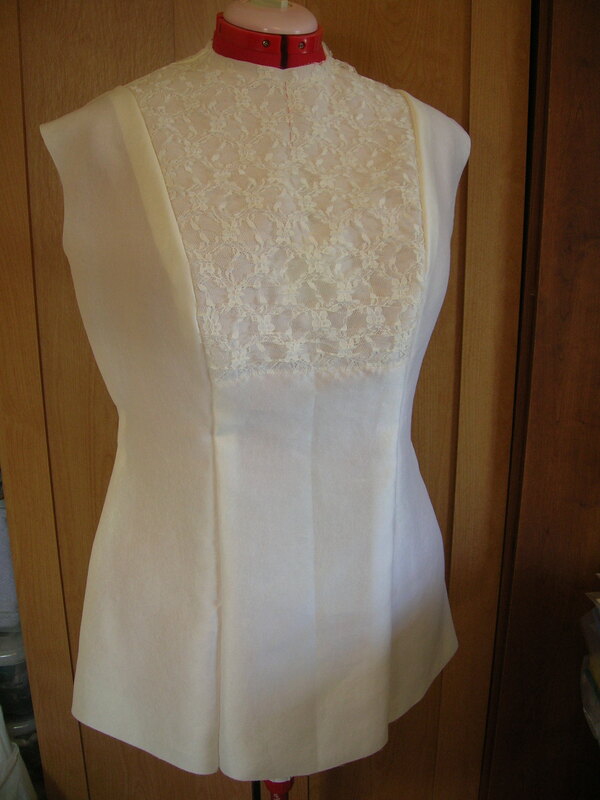





















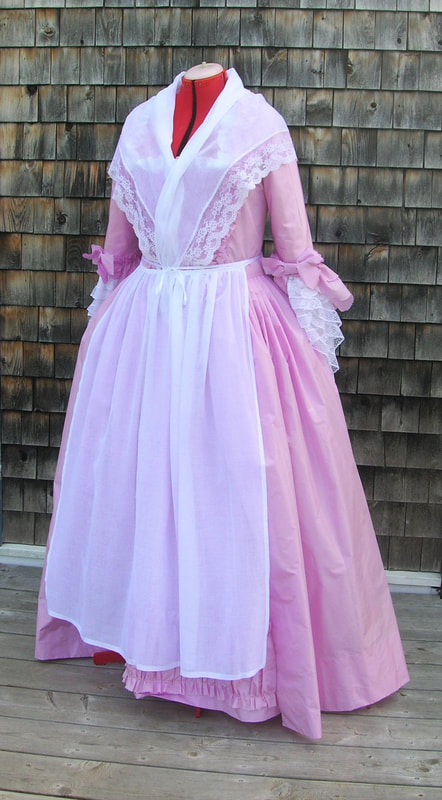






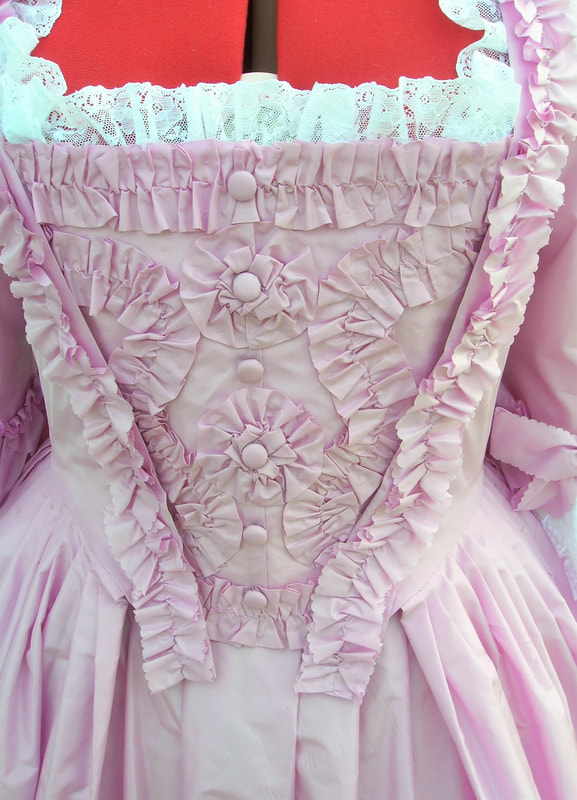


















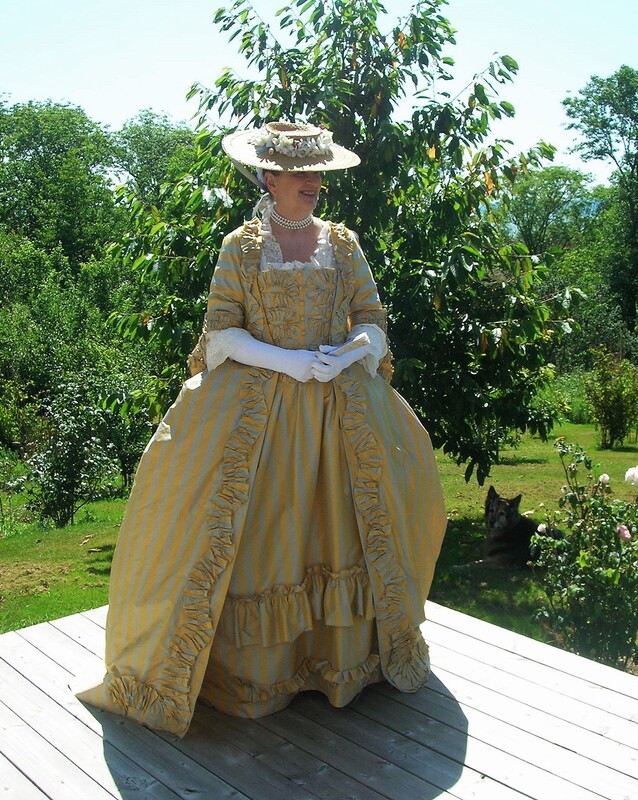














































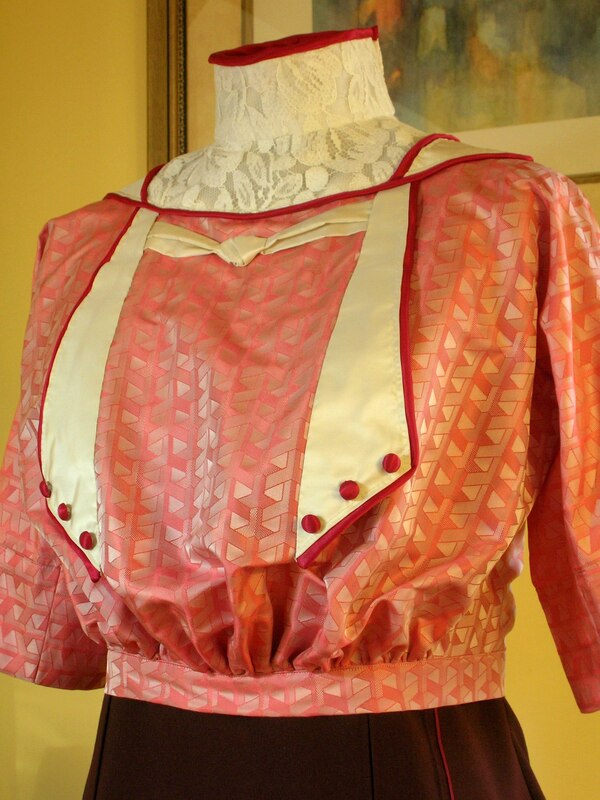













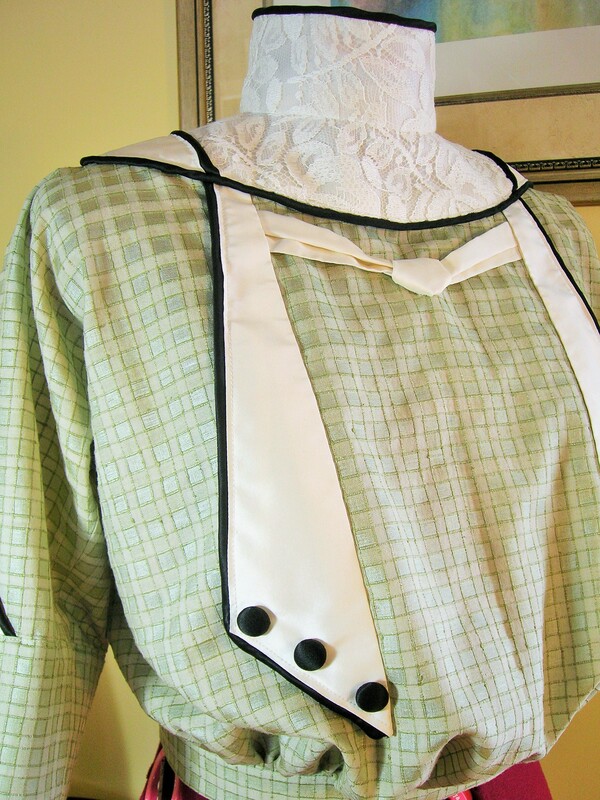



























































 RSS Feed
RSS Feed